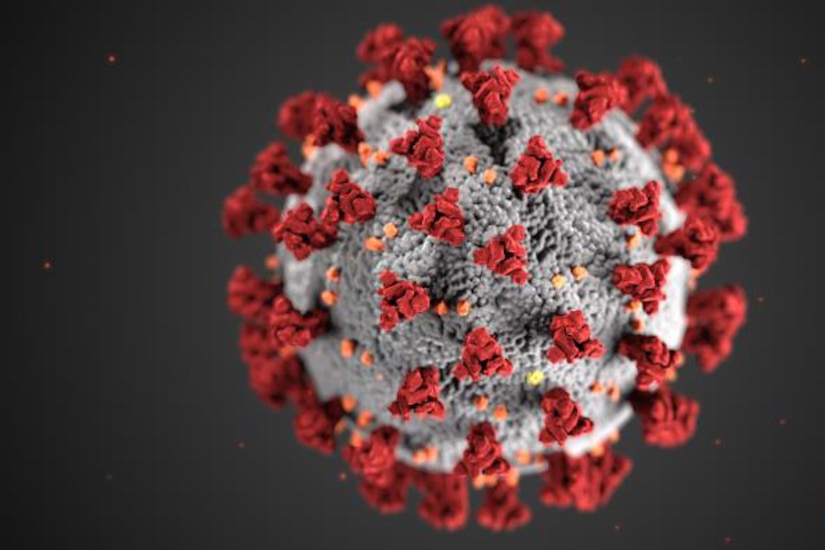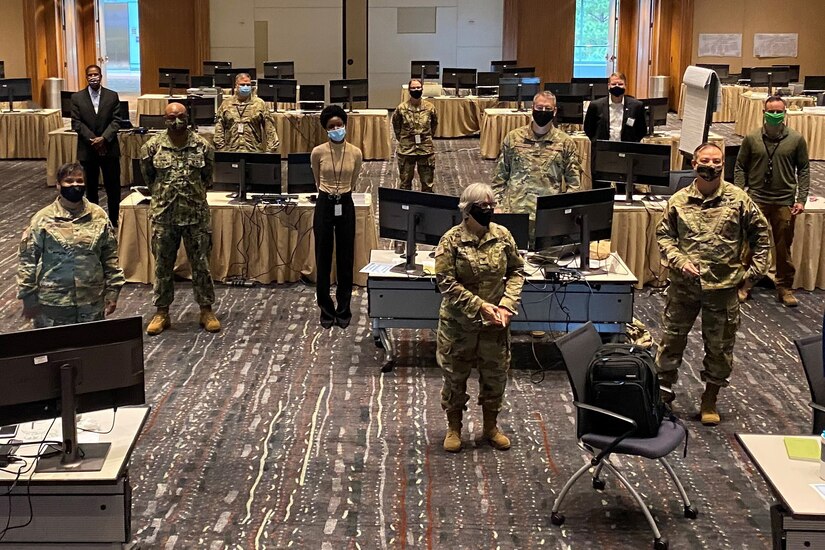Nov. 12, 2020 |
Ten military officers assigned to Operation Warp Speed are embedded at the Centers for Disease Control and Prevention to assist the allocation and distribution of COVID-19 vaccine.

Operation Warp Speed, led by the Department of Health and Human Services and the DOD, employs a "whole of America" approach to develop and deliver 300 million doses of the COVID-19 vaccine and therapeutics to treat the virus.
More than 600 miles from Operation Warp Speed headquarters in Washington D.C., each of the Army, Navy and Air Force officers in Atlanta are teamed with a CDC regional coordinator responsible for a specific area of the country and its territories.
"The country's existing public health infrastructure is well tested — we see evidence every fall when Americans receive the flu vaccine in large numbers. But these are not normal times," Army Gen. Gus Perna, Operation Warp Speed's chief operating officer, said. "Leveraging our military planning and logistics capability and combining that with proven methods will allow existing systems to scale quickly to get the vaccine to the American people."

The military liaisons and partner regional coordinators are communicating daily with various agencies within their assigned regions to discuss how vaccines will be prioritized, packaged and shipped. Information exchanges are continuous as regions work through the special handling instructions — like cold storage — and other considerations surrounding delivery.
"Like most of America, public health professionals are working through the challenges brought on by quarantines, telework and social distancing," Deacon Maddox, Operation Warp Speed's chief of plans, operations and analytics, said. "While the pandemic stresses both people and systems, our expertise and technology tools provide a disciplined and deliberate approach to prioritize vaccine delivery and ease the burden of public health officials throughout the nation."
Operation Warp Speed is using the Tiberius platform, a cutting-edge data platform to collect, correlate and visualize data across the entire operation. It is loaded with data from various sources — U.S. Census, Department of Health and Human Services, State Health Offices and the CDC. Tiberius integrates the data related to manufacturing, clinical trials, supply chain, allocation, state and territory planning, delivery and administration of both vaccine products and kits containing needles, syringes and other supplies needed to administer the vaccine. No personally identifiable or personal health information is contained in the Tiberius system.
All 50 states recently submitted COVID-19 distribution plans to the CDC, and the Operation Warp Speed team is involved in helping the CDC review those plans. Once the CDC Advisory Committee on Immunization Practices makes its recommendations on who should receive the vaccine first, the HHS secretary, in consultation with national leadership, will decide how to prioritize the initially limited doses. OWS will input these decisions into Tiberius, and using several other logistical factors, compute the quantities to be allocated to each jurisdiction. The jurisdictions will work inside the Tiberius platform to decide where every allocated dose will go — from local doctors' offices to large medical centers. These decisions will then be sent to distributors to complete deliveries across the country.

"We still have several unknowns, but that is what the military is best at — planning for every contingency, and that is what we are helping states with now," Maddox said. "Every state is different — no two information systems are the same."
Through the Tiberius software though, Maddox said the team has visibility within one system to see a full snapshot across all U.S. jurisdictions to provide decision support for distribution and allocation using 2020 technology.
While most of the nation is eagerly anticipating the first vaccine delivery, Maddox noted the Atlanta team is looking beyond initial distribution to the hundreds of millions of doses expected in subsequent shipments.
"Timing for the first dose is the beginning, but we are going to be in continual distribution as production comes off the line daily or weekly — and it must be distributed," Maddox said.






No comments:
Post a Comment